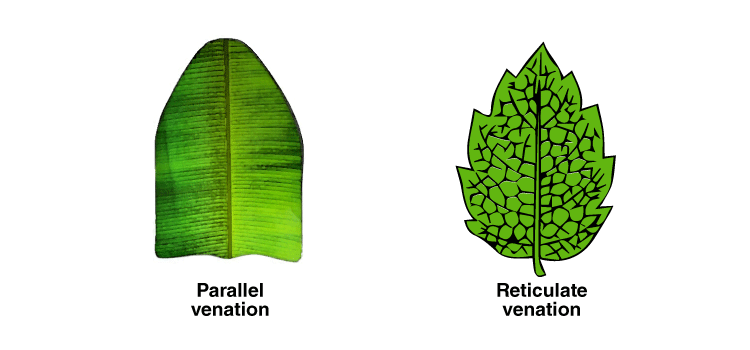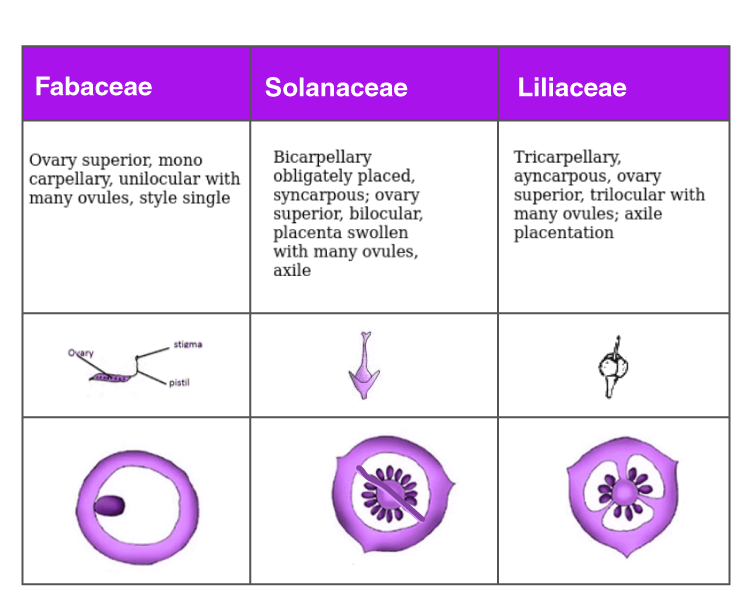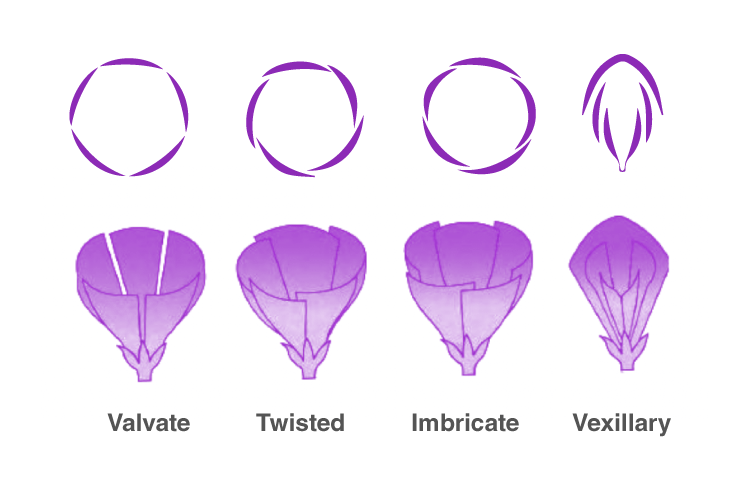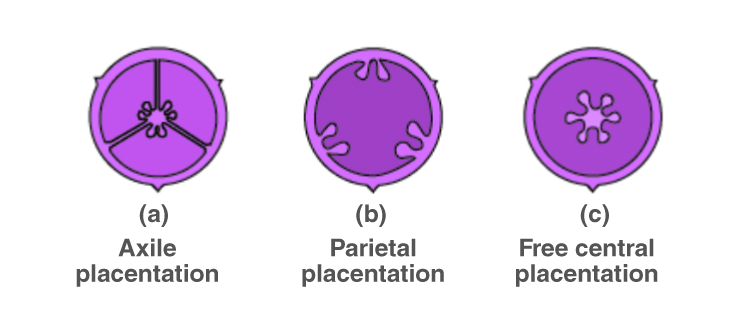NCERT Exemplar Solutions for Class 11 Biology Chapter 5 Morphology of Flowering Plants add necessary insights to your learning skills by testing your concept comprehension, analytical thinking, and problem-solving ability. Solving these exemplar questions will equip you for the annual examination as well as for the important graduate entrance examination, like NEET.
Chapter 5, Morphology of flowering plants, NCERT exemplar PDF provided here has different types of questions like MCQs, short and long answer questions, match the following type questions, important diagrams, important questions from previous years’ question papers, worksheets, HOTS, and tips and tricks.
NCERT Exemplar Solutions for Class 11 Biology Chapter 5 Morphology of Flowering Plants
Access NCERT Exemplar Solutions for Class 11 Biology Chapter 5
MULTIPLE CHOICE QUESTIONS
1. Rearrange the following zones as seen in the root in the vertical section and choose the correct option.
A. Root hair zone
B. Zone of meristems
C. Rootcap zone
D. Zone of maturation
E. Zone of elongation
Options:
a. C, B, E, A, D
b. A, B, C, D, E
c. D, E, A, C, B
d. E, D, C, B, A
Solution;
Option (a) is the answer.
2. In an inflorescence where flowers are borne laterally in acropetal
succession, the position of the youngest floral bud in the floral axis
shall be
a. Proximal
b. Distal
c. Intercalary
d. Anywhere
Solution:
Option (b) is the answer.
3. The mature seeds of plants such as gram and peas possess no endosperm, because of
a. These plants are not angiosperms
b. There is no double fertilization in them
c. The endosperm is not formed in the
d. Endosperm gets used up by the developing embryo during seed
development
Solution:
Option (d) is the answer.
4. Roots developed from parts of the plant other than radicles are called
a. Taproots
b. Fibrous roots
c. Adventitious roots
d. Nodular roots
Solution:
Option (c) is the answer.
5. Venation is a term used to describe the pattern of arrangement of
a. Floral organs
b. Flower in inflorescence
c. Veins and veinlets in a lamina
d. All of them
Solution:
Option (c) is the answer.
6. The endosperm, a product of double fertilisation in angiosperms, is absent
in the seeds of
a. Coconut
b. Orchids
c. Maize
d. Castor
Solution:
Option (b) is the answer.
7. Many pulses of daily use belong to one of the families below (tick the
correct answer)
a. Solanaceae
b. Fabaceae
c. Liliaceae
d. Poaceae
Solution:
Option (b) is the answer.
8. The placenta is attached to the developing seed near the
a. Testa
b. Hilum
c. Micropyle
d. Chalaza
Solution:
Option (b) is the answer.
9. Which of the following plants is used to extract the blue dye?
a. Trifolium
b. Indigofera
c. Lupin
d. Cassia
Solution:
Option (b) is the answer.
10. Match the following and choose the correct option
| Column I
A. Aleurone layer B. Parthenocarpic fruit C. Ovule D. Endosperm |
Column II
i. without fertilization ii. Nutrition iii. Double fertilization iv. Seed |
Options:
a. A-i, B-ii, C-iii, D-iv
b. A-ii, B-i, C-iv, D-iii
c. A-iv, B-ii, C-i, D-iii
d. A-ii, B-iv, C-i, D-iii
Solution:
Option (b) is the answer.
VERY SHORT ANSWER TYPE QUESTIONS
1. Roots obtain oxygen from the air in the soil for respiration. In the absence or
deficiency of O2, root growth is restricted or completely stopped. How do
the plants growing in marshlands or swamps obtain their O2 required
for root respiration?
Solution:
In some plants, such as Rhizophora growing in swampy areas, many roots come out of the ground and grow vertically upwards. Such roots, called pneumatophores, help to get oxygen for respiration.
2. Write the floral formula for a flower, which is bisexual, actinomorphic, pentamerous sepal, petal, stamens free with the ovary, syncarpous, superior, and trilocular with axile placentation.
Solution:

3. In Opuntia, the stem is modified into a flattened green structure to perform the function of leaves (i.e., photosynthesis). Cite two other examples of modifications of plant parts for photosynthesis.
Solution:
In Australian Acacia, the petiole takes the shape of the leaf and turns green to perform the function of photosynthesis.
The stem, i.e., about one internode long, modifies into a leaf-like structure to carry out photosynthesis, as in Asparagus.
4. In swampy areas like the Sunderbans in West Bengal, plants bear special kind of roots called _____________.
Solution:
In swampy areas like the Sunderbans in West Bengal, plants bear special kinds of roots called pneumatophores.
5. In aquatic plants like Pistia and Eichhornia, leaves and roots are found near _____________.
Solution:
In aquatic plants like Pistia and Eichhornia, leaves and roots are found near Node.
6. Reticulate and parallel venation is characteristic of _____________ and _____________, respectively.
Solution:
Reticulate and parallel venation is characteristic of dicotyledons and monocotyledons, respectively.
7. Which parts in ginger and onion are edible?
Solution:
In ginger, the edible part is a rhizome which is a modified shoot that stores food materials. The edible part of the onion is fleshy scale leaves.
8. In the epigynous flower, the ovary is situated below the _____________.
Solution:
In an epigynous flower, the ovary is situated below the sepals, petals and androecium.
9. Add the missing floral organs of the given floral formula of Fabaceae.

Solution:
The given floral formula lacks Corolla. The floral formula of the family Fabaceae is

10. Name the body part modified for food storage in the following
a. Carrot __________________________
b. Colocasia __________________________
c. Sweet potato __________________________
d. Asparagus __________________________
e. Radish __________________________
f. Potato __________________________
g. Dahlia __________________________
h. Turmeric __________________________
i. Gladiolus __________________________
j. Ginger __________________________
k. Portulaca __________________________
Solution:
a. Carrot – Root
b. Colocasia – Stem
c. Sweet potato – Root
d. Asparagus – Root
e. Radish – Root
f. Potato – Stem
g. Dahlia – Root
h. Turmeric – Stem
i. Gladiolus – Stem
j. Ginger – Stem
k. Portulaca – Root
SHORT ANSWER TYPE QUESTIONS
1. Give two examples of roots that develop from different parts of the
angiosperms plant other than the radicle.
Solution: Banyan tree – roots develop from the lower nodes of the stem. They are prop roots which grow downwards and touch the soil. They are meant for support.
Sugarcane – roots arise from the lower nodes of the stem and enter the soil. They are stilt roots which are meant to provide strength to the plant.
2. The essential functions of roots are anchorage and absorption of water and minerals in the terrestrial plant. What functions are associated with the roots of aquatic plants? How are the roots of aquatic plants and terrestrial plants different?
Solution:
The aquatic plants don’t have to face problems in obtaining water. Therefore the main function of the roots of aquatic plants is anchorage.
| Aquatic plants | Terrestrial plants |
| Roots are either absent or underdeveloped
Vascular bundles are not well developed Modifies to carry out photosynthesis food storage, and exchange of gases |
Roots are well developed
Vascular bundles are well developed Provide anchorage and help in the absorption of nutrients from the soil |
3. Draw diagrams of a typical monocot and dicot leave to show their venation pattern.
Solution:

4. A typical angiosperm flower consists of four floral parts. Give the names of the floral parts and their arrangements sequentially.
Solution:
Calyx – It is the outermost whorl of the flower and the members are called sepals which are green, leaf-like and protect the flower in the bud stage.
Corolla – It is composed of petals. Petals are usually brightly coloured to attract insects for pollination.
Androecium – It is composed of stamens. Each stamen which represents the male reproductive organ, consists of a stalk or a filament and an anther.
Gynoecium – It is the female reproductive part of the flower and is made up of one or more carpels. A carpel consists of three parts, namely stigma, style and ovary.
5. Given below are the floral formulae of some plants. Draw floral diagrams from these formulae.

Solution:

6. Reticulate venation is found in dicot leaves while in monocot leaves venation is of parallel type. Mention one exception to this generalization.
Solution:
Similar and Dioscorea are monocots having reticulate venation. Calophyllum and Eryngium are dicots parallel venation.
7. You have heard about several insectivorous plants that feed on insects. Nepenthes or the pitcher plant is one such example, which usually grows in shallow water or marshlands. What part of the plant is modified into a ‘pitcher’? How does this modification help the plant for food even though it can photosynthesize like any other green plant?
Solution:
The pitcher plant can’t photosynthesize like other green plants so it gets its food from the insects as these insects are a good source of Nitrogen for the insectivorous plants.
8. Mango and coconut are ‘drupe’ type of fruits. In mango, fleshy mesocarp is edible. What is the edible part of coconut? What does milk of tender coconut represent?
Solution:
The edible part of the coconut is the endosperm. The milk of tender coconut represents the oily endosperm in liquid form. Later it gets deposited along the walls of endocarp and forms edible flesh.
9. How can you differentiate between free central and axile placentation?
Solution:
When the placenta is axial and the ovules are attached to it in a multilocular ovary, the placentation is said to be axile. Examples – china rose, tomato and lemon.
When the ovules are borne on the central axis and septa are absent, the placentation is called free central. Examples – Dianthus and Primrose.
10. Tendrils are found in the following plants. Identify whether they are stem tendrils or leaf tendrils. a.Cucumber
b. Peas
c. Pumpkins
d. Grapevine
e. Watermelons
Solution:
a. Cucumber – Stem tendrils
b. Peas – Leaf tendrils
c. Pumpkins – stem tendrils
d. Grapevines – stem tendrils
e. Watermelons – stem tendrils
11. Why is maize grain usually called as a fruit and not a seed?
Solution:
The maize grain is usually called fruit because it is a ripened ovary which contains a ripened ovule.
12. Tendrils of grapevines are homologous to the tendril of pumpkins but are analogous to that of a pea. Justify the above statement.
Solution:
The tendrils of grapevines are homologous to the tendril of pumpkins as both originated from the same part of the plant i.e. stem but have different functions. In grapevines, the function of tendrils is to climb, while in pumpkins is creeping.
13. The rhizome of ginger is like the roots of other plants that grow underground. Despite this fact, ginger is a stem and not a root. Justify.
Solution:
Ginger is a stem, not a root, because it possesses nodes and internodes which are not possessed by the roots.
14. Differentiate between
a. Bract and Bracteole
b. Pulvinus and petiole
c. Pedicel and peduncle
d. Spike and spadix
e. Stamen and staminoid
f. Pollen and pollenium
Solution:
a. A bract is present at the base of the pedicle, whereas bracteolate is present between bract and flower.
b. Pulvinus is swollen leaf base present in leguminous plants, whereas petiole is a subcylindrical stalk which connects the leaf base with the lamina.
c. The pedicle is a stalk of flower and peduncle is a stalk of whole inflorescence
d. Spike is that the flowers are sessile that develop on an elongated peduncle in acropetal succession, whereas spadix is covered by one of the few large bracts called spates
e. Stamen represents a male reproductive organ, whereas sterile stamen is called stamina.
f. Pollen is a male gametophyte of angiosperms, whereas polonium is the group of pollen grains.
LONG ANSWER TYPE QUESTIONS
1. Distinguish between families Fabaceae, Solanaceae, Liliaceae based on gynoecium characteristics (with figures). Also, write the economic importance of any one of the above family.
Solution:

2. Describe various stem modifications associated with food storage, climbing and protection.
Solution:
i) Food storage – Underground stems of potato, ginger, turmeric, Samarkand, Colocasia are modified to store food in them.
ii) Climbing – Stem tendrils which develop from axillary buds, are slender and spirally coiled and help plants to climb such as in gourds (cucumber, pumpkins, watermelon) and grapevines.
iii) Protection – Axillary buds of stems may also get modified into woody, straight and pointed thorns. Thorns are found in many plants such as Citrus, Bougainvillea.
3. Stolon, offset and rhizome are different forms of stem modifications. How can these modified forms of stem be distinguished from each other?
Solution:
Stolon is underground stems which spread to new niches and when old plants die, new are formed. It is a creeper.
Offset is a lateral branch with short internodes and each node bearing a rosette of leaves and tuft of roots is found in aquatic plants.
The rhizome is an underground stem growing parallel to soil surface which is differentiated from roots in having scale leaves and auxiliary buds and helps in vegetative propagation.
4. The mode of arrangements of sepals or petals in a floral bud is known as aestivation. Draw the various types of aestivation possible for a typical pentamerous flower.
Solution;
There are 4 types of aestivation.
i. Valvate
When sepals or petals in a whorl just touch one another at the margin, without overlapping, as in Calotropis, it is said to be valvate.
ii. Twisted
If one margin of the appendage overlaps that of the next one and so on as in china rose, lady’s finger and cotton, it is called twisted.
iii. Imbricate
If the margins of sepals or petals overlap one another but not in any particular direction as in Cassia and Gulmohar, the aestivation is called imbricate.
iv. Vexillary
In pea and bean flowers, there are five petals, the largest (standard) overlaps the two lateral petals (wings) which in turn overlap the two smallest anterior petals (keel); this type of aestivation is known as vexillary.

5. The arrangement of ovules within the ovary is known as placentation. What does the term placenta refer to? Name and draw various types of placentations in the flower as seen in T.S. or V.S.
Solution:

The mode of attachment of ovule to the placenta is known as placentation which is of the following types: Parental, Marginal, Axile, Free central and Basal.
6. Sunflower is not a flower. Explain.
Solution:
Sunflower is not a flower but a type of inflorescence called capitulum in which the receptacle is flattened. The whole cluster of florets gets surrounded by bracts, known as an involucre. Two kinds of florets are recognised in sunflowers:
(i) Ray Florets – Arranged on the rim of a receptacle having distinct yellow and strap-shaped petals. These florets are female, sterile and are always zygomorphic and may be arranged in one or more whorls.
(ii) Disc florets – Grouped in the centre, bisexual and actinomorphic.
7. How do you distinguish between hypogeal germination and epigeal germination? What is the role of the cotyledon (s) and the endosperm in the germination of seeds?
Solution:
Role of Cotyledons and Endosperm in the germination of seeds –
They contain reserved food materials. When seed imbibes water, enzymes get activated, hydrolyze reserve food material and make it available for the germinating seed.
Hypogeal germination is when epicotyl grows first, and the only plumule is pushed out of the soil. The cotyledons remain non-green and non-photosynthetic.
In Epigeal germination, hypocotyl grows first. It pushes cotyledons and other parts of the seed out of the soil. Cotyledons become green and photosynthetic.
8. Seeds of some plants germinate immediately after shedding from the plants, while in other plants they require a period of rest before germination. The latter phenomenon is called dormancy. Give the reasons for seed dormancy and some methods to break it.
Solution:
Reasons for seed dormancy –
• Impermeable and hard seed coat
• Presence of chemical inhibitors like abscisic acid
• Immature embryo
Methods to break seed dormancy are –
• Washing away of inhibitors due to rain
• Maturation of embryo
• Inactivation of growth inhibitors due to heat or cold treatment.
• Weakening and decomposition of seed coat by microorganisms.
The morphology of flowering plants is the science that deals with the structure and form of the various flowering plants in the plant kingdom. The study of these plants is termed botany, which involves the study of forms, positions, and external features.
The major parts of a flowering plant are listed below:
- The Root
- The Stem
- The Leaf
- Flower
Important Concepts Covered in Chapter 5 Morphology of Flowering Plants
- The Root
- Regions of the Root
- Modifications of Root
- The Stem
- Modifications of Stem
- The Leaf
- Venation
- Types of Leaves
- Phyllotaxy
- Modifications of Leaves
- The Inflorescence
- The Flower
- Parts of a Flower
- The Fruit
- The Seed
- Structure of a Dicotyledonous Seed
- Structure of Monocotyledonous Seed
- Semi-technical Description of a Typical Flowering Plant
- Description of Some Important Families
- Fabaceae
- Solanaceae
- Liliaceae
| Also Access |
| NCERT Solutions for Class 11 Biology Chapter 5 |
| CBSE Notes for Class 11 Biology Chapter 5 |
BYJU’S aims to provide quality and innovative education to CBSE students. BYJU’S unique teaching methodology not only makes students understand Biology concepts clearly but also helps to memorise the knowledge gained for a very long period of time.















Comments